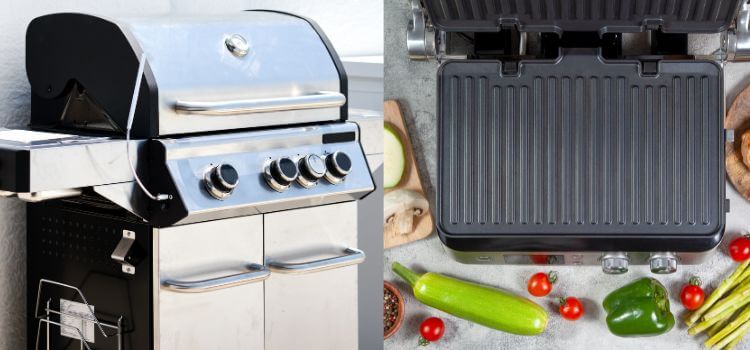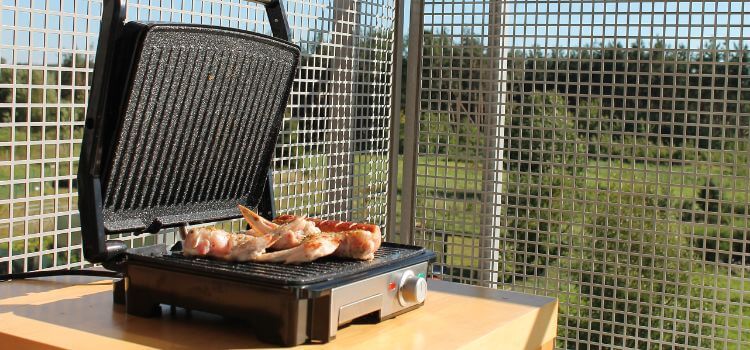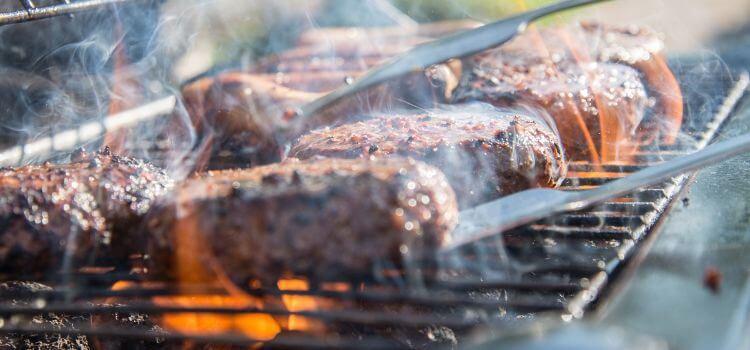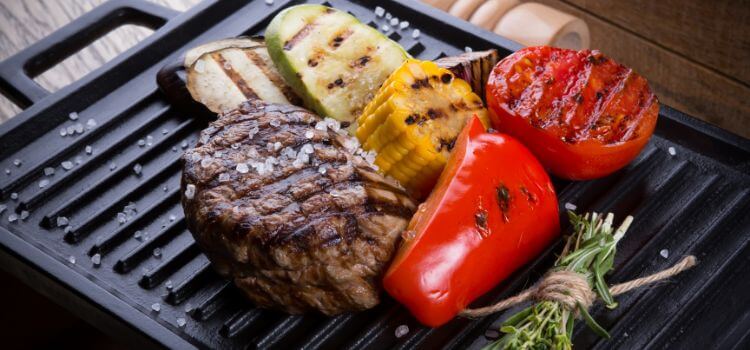As an Amazon Associate, I earn from qualifying purchases

When it comes to equipping your kitchen for culinary success, the choice between an electric and gas griddle is a crucial decision. Both choices present distinct benefits and factors to consider that can greatly influence your culinary journey and the excellence of your creations.
This article will uncover the significant variances between electric and gas griddles, examine their individual advantages, and offer valuable insights to assist you in making an informed choice. For professional chefs, food enthusiasts, or restaurant owners, grasping the intricacies of these cooking appliances is crucial for maximizing kitchen efficiency.
Understanding Electric Griddles

Electric griddles are culinary tools powered by electricity. They consist of a flat, smooth surface made of cast iron or steel heated by embedded electric heating elements. Unlike gas griddles, which require an external gas supply such as propane or natural gas, electric griddles only need to be plugged into an electrical outlet.
Pros using of electric griddles
One of the most significant advantages of electric griddles is their ease of use. As they don’t require a gas supply, they can be used in any indoor setting, making them a popular choice for home kitchens and small commercial spaces. Additionally, electric griddles are versatile and can reach high temperatures quickly, making them suitable for cooking a variety of dishes.
However, electric griddles may not be as efficient as gas griddles when it comes to heat distribution. As the heating elements are embedded in the surface, they can create hot spots and uneven cooking temperatures. This issue can be resolved by regularly flipping or rotating the food being cooked.
Cons of using electric griddles
One of the main disadvantages of electric griddles is their reliance on electricity. In case of a power outage, they cannot be used, which can disrupt your cooking operations. Additionally, as they require an electrical outlet, they may not be suitable for outdoor use or in areas with limited outlets.
Understanding Gas Griddles

Gas griddles use propane or natural gas as their primary source of energy. Unlike electric griddles, they have a separate heating element connected to a gas supply that heats the surface of the griddle. They also feature adjustable temperature controls to regulate the heat output.
Pros of using gas griddles
One of the primary advantages of using a gas griddle is its precise temperature control. Gas griddles allow for more even heat distribution, ideal for cooking delicate foods that demand consistent heat. They are not only energy-efficient but can also rapidly achieve high temperatures, thereby reducing cooking durations.
However, as gas griddles require a separate gas supply, they may not be suitable for all settings. They are better suited for outdoor use or in areas with proper ventilation. Additionally, they may require professional installation to ensure appropriate gas connections and safety measures.
Cons of using gas griddles
One of the main concerns with gas griddles is their potential for gas leaks or malfunctions. Routine maintenance and thorough inspections are vital to guarantee safe utilization. Gas griddles also tend to be more expensive compared to electric griddles, both in terms of initial purchase and operating costs.
Performance and Cooking Capabilities

Cooking performance:
When it comes to cooking performance, both electric and gas griddles have their strengths and limitations. Electric griddles are better suited for quick-cooking, high-heat dishes such as pancakes or burgers. In contrast, gas griddles excel in more delicate cooking tasks like sautéing vegetables or searing fish.
Overall, gas griddles offer greater versatility in terms of temperature control and cooking methods, while electric griddles offer convenience and speed.
Cooking versatility:
Heat control and temperature consistency are crucial factors to consider when choosing a griddle. Gas griddles offer more precise heat control with their adjustable knobs, allowing for a broader range of cooking techniques. Electric griddles may have less consistent temperatures, but regular flipping or rotation can help mitigate this issue.
In terms of cooking versatility, gas griddles have the upper hand as they can accommodate a variety of cookware, including cast iron and stainless steel. Electric griddles may have limitations in terms of the type and size of cookware that can be used.
Maintenance and Long-Term Cost Analysis
Maintenance requirements:
Ensuring proper maintenance of your griddle is crucial to enhance its lifespan and efficiency. Electric griddles are generally easier to clean and maintain than gas griddles, as they don’t have a separate heating element or fuel source that needs to be regularly checked and cleaned.
Gas griddles require more thorough cleaning, including the removal of any food debris or grease buildup from the burners and gas connections. Regular inspections and maintenance are necessary to guarantee safe usage.
Long-term cost analysis:
When it comes to long-term costs, gas griddles may have a higher initial investment compared to electric griddles, but they tend to have lower operating costs in the long run. This is due to the fact that electricity prices are typically more expensive than gas prices, and gas griddles are generally more energy-efficient.
The extent of cost savings could differ based on how often it’s used and the maintenance needed. Considering both the upfront investment and long-term expenses is crucial when choosing between an electric or gas griddle.
Key Factors: Making the Right Choice
- Ease-of-use and convenience: Electric griddles are easier to use, while gas griddles offer more precise heat control.
- Versatility in cooking methods and types of cookware: Gas griddles have the upper hand in terms of versatility.
- Cost considerations: Gas griddles may require a higher upfront investment, yet they typically result in reduced operating expenses over time.
- Maintenance requirements: Electric griddles are easier to clean and maintain, while gas griddles require more thorough cleaning and inspections.
Conclusion
In summary, electric and gas griddles each come with distinct pros and cons. Electric griddles offer convenience and are suitable for indoor use, while gas griddles provide greater cooking versatility and temperature control.
The choice ultimately depends on personal preferences and individual needs, as well as considering the long-term costs of maintenance and operation. Whichever type of griddle you choose, proper maintenance and usage will ensure its optimal performance for years to come. Happy cooking!
As an Amazon Associate, I earn from qualifying purchases